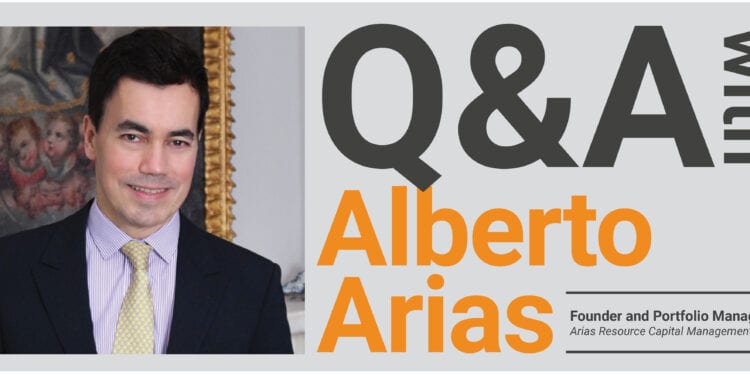1. Hi Alberto, thank you for joining us. Can you give a short introduction of yourself and your background?
I am the founder and portfolio manager of Arias Resource Capital, a private equity fund focused on the metals and mining sector.
2. Can you give an overview of the overall investment strategy for Arias Resource Capital?
Our Investment strategy is focused on high-quality mining assets that have been historically in underdeveloped and underexplored regions, due to lack of capital or other impediments that our funds can help resolve.
3. Arias Resource Capital has invested into Largo Resources (TSX: LGO) and Sierra Metals (TSX: SMT). How did these companies meet your criteria for investment?
Largo is regarded by experts as the highest quality asset in the vanadium world and our fund was instrumental in developing and operating the mine and processing facilities. Sierra Metals, in my view, has some of the most exciting growth profiles in the mid-sized mining sector, fueled by its asset quality and good management team, which is expanding its three operating mines in Mexico and Peru.
4. Any other mining companies fitting your criteria that deserve a mention?
We have some private investments that have quite exciting prospects as well and prefer to develop them privately for the moment.
5. Largo Resources and Sierra Metals are both TSX-listed companies. Do you have a preference for mining companies on the TSX over other stock exchanges?
We are happy with Canadian listings for our companies, but also try to do dual listings with US exchanges and listings on the local equity markets where the mines are located and provide access to the project’s benefits to the local investors and institutions.
6. What are your preferred metals and minerals at present? And why?
We like battery materials, particularly copper and vanadium. We believe that both copper and vanadium will be in tight supply, in part due to declining grades of copper mines and challenges to bring new large copper projects online. For Vanadium, the market has had a structural change driven by a new standard in steel rebars in China, which require higher levels of vanadium, thus boosting global vanadium demand levels.
7. Part of your investment strategy is a focus on Latin America. What is the outlook for mining investment in this region? Where do you see new opportunities emerging?
Latin America is very diverse, so it is hard to generalize the outlook for the whole continent as one. However, a trend that is worrisome for the industry is the rise of opposition by local communities to some mining projects. Furthermore, in some countries, there has been rising resource nationalism. This has resulted in increased bureaucratic obstacles that can delay the exploration and development of projects for years, thus reducing the attractiveness to invest.
8. Finally, how do you believe the US-China trade war and recent large M&A activity has impacted the global mining sector?
I believe these events have had diverse impacts on the mining sector. The trade tensions have temporarily slowed down economic growth and increased uncertainty and risks in future growth projections, which are not positive for industrial metals. However, on the other hand, it could increase the attractiveness of precious metal investments as a hedge to financial risks. With regards to M&A, it has intensified as the mining sector needs to have players that meet the size and critical mass required today to be relevant to the global equity markets.












